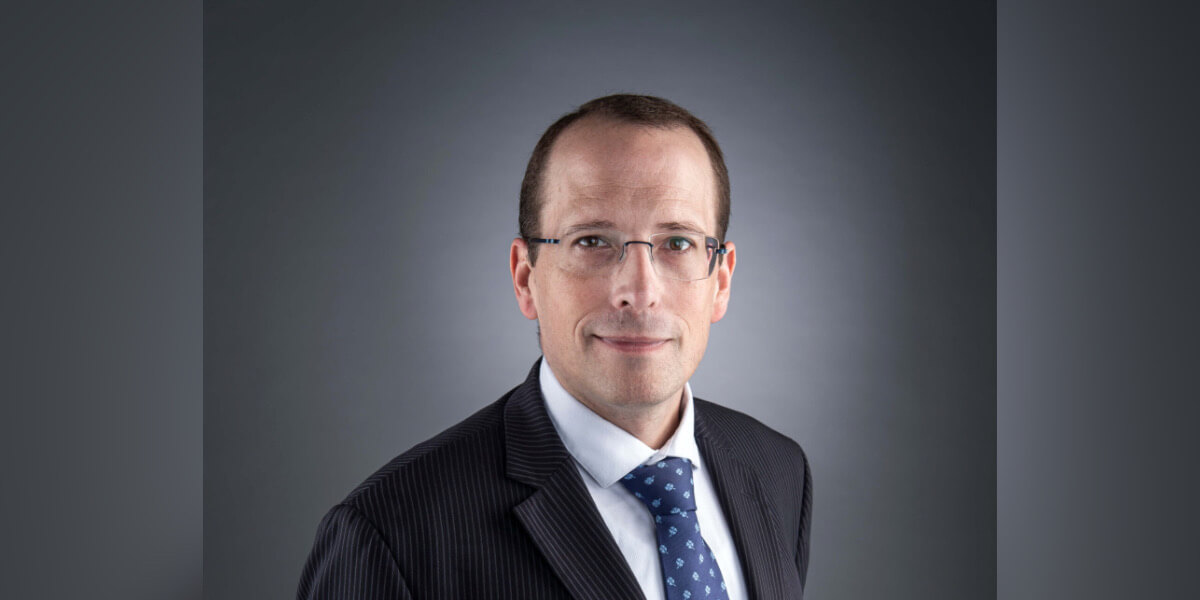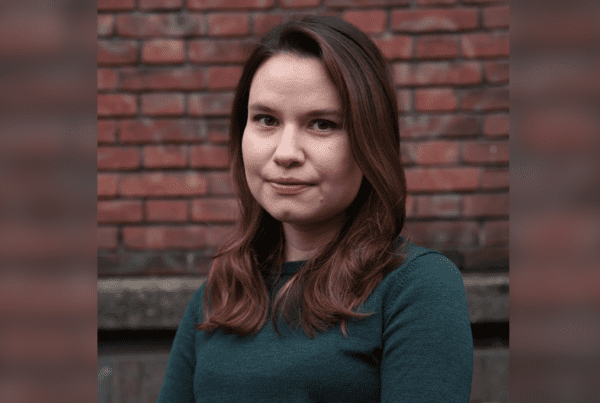Phillip, in “Revealing the Alt-Right: Exploring Alt-Right History, Thinkers and Ideas for Public Officials,” you discuss how the slow death of “fusional” mainstream conservatism has resulted in the explosion of different forms of conservatism. Did this evolution intersect with the less top-down and more bottom-up conservatism that has shaken the Republican Party? How do Trump and “Trumpism” fit into these transformations of U.S. conservatism at both the elite and grassroots levels?
It indeed intersects very strongly with the more bottom-up conservatism changes. While there were many elements of this change (the article you mention notes how the collapse of the Soviet Union removed the Communist “common enemy” that maintained the fusionist coalition), three factors come to mind as particularly important.
First, and perhaps most central, is the telecommunications revolution. Previously, journals like National Review and major organizations such as Intercollegiate Studies Institute (ISI) could play a strong “gate-keeping” role simply because of the lack of other venues through which for different conservative/rightist views could spread; this gate-keeping could be circumvented only by massive individual wealth (as in the case of Ross Perot in the early 1990s). With the Internet, and especially the popularity of blogging, these barriers became significantly less daunting: being barred from writing in National Review, for instance, no longer meant an inevitable “excommunication” from conservative/rightist platforms.
A second part of this evolution involves the major economic changes arising from globalization and the “offshoring” of jobs to other countries. Here again, the candidacy of Perot is instructive: even at this early period, one can see a heightened division between the free-market and corporate factions and the more nationalist, small-business, and worker-oriented factions of conservatism. These divisions have only become more pronounced in the ensuing three decades. The term “Conservative, Inc.” (used by the Alt-Right as well as by other conservative/rightist tendencies) exemplifies this division: mainstream conservative organizations act more as mouthpieces for larger businesses, while issues of major importance to their supposed constituents are either merely paid lip-service or ignored entirely.
The third intersection involves the U.S. “culture wars”. Social policy was a contentious element within the fusionist coalition. Over this three-decade period, the political strength of the “Religious Right” waned compared to that of the free-market and the “neoconservative” factions (the latter focused particularly on foreign policy, but tended to side with the free-market factions on economic matters). The nationalist and socially conservative factions increasingly believed that mainstream conservatives, for the most part, really were not conserving anything of value. With the very rapid changes in policies regarding homosexuality, gay marriage, religious freedom, racial policies, and the like, they believed mainstream conservative institutions simply refused to fight. Or, even worse, that they were “progressives going the speed limit”—in other words, that these institutions would eventually simply take on the leftist policy changes as “true” conservatism. A combination of these factors provided the fuel for a “revolt from below.”
One could look at Trump as a symptom (or filling a heretofore unoccupied void) of this dissatisfaction. For these dissatisfied factions, Trump actually fought, rather than “growing in office” once gaining the presidency. He made moves on immigration, attempted to build the southern wall, attempted to curb funding to Planned Parenthood, cut back on foreign conflicts, and took what appears to be an “America-first” attitude to economic negotiations. For many of these factions, Trump actually did what “Conservative, Inc.” had promised (but failed) to do for decades. Trump himself, then, was more a cipher than anything else—and even if he should vanish tomorrow, the desire for someone like him will remain.
For many of these factions, Trump actually did what “Conservative, Inc.” had promised (but failed) to do for decades. Trump himself, then, was more a cipher than anything else—and even if he should vanish tomorrow, the desire for someone like him will remain.
You define four key issues for the Alt-Right that may have a direct impact on policymaking: immigration, natalism, affirmative action, and national reorganization. Can you briefly discuss each of them, especially the last two, which are probably less obvious to readers?
On all four of these points, there are definitely similarities between the Alt-Right and more general conservatism. But it is important to distinguish them (just as a progressive and a Marxist-Leninist can overlap on some points, but obviously are not the same). The biggest difference between the Alt-Right and other forms of conservatism (be it the “mainstream,” nationalistic, or traditionalist versions, and so forth) is its inherently biologistic frame of analysis.
Immigration is the most obvious example, and one with which readers are no doubt familiar. For much of the Right (conservatives or otherwise), current levels of immigration are problematic. Concerns include the violation of the rule of law (through winking at illegal immigration), negative influences on wages and local economies, supposed increases in crime, and major demographic replacement. While the Alt-Right shares many of these views, it takes them in a more biologistic direction, with three main results. First, it believes these policies will inevitably lead to greater social conflict, as they try to force disparate racial groups into close proximity. Second, the Alt-Right views these policies as attempting to replace not only voters, but the white populations of the United States: in effect, a massive social and demographic change aimed at removing the traditional populations. Third, the Alt-Right does not believe these results are accidental or merely the result of “well-intentioned but wrong” policymakers, but argues that they are very much intentional: in their view, this replacement benefits major corporations (by depressing wages and creating ethnic conflict between workers who might otherwise join together in collective labor action) as well as those with institutional power (creating a tribalistic America easily manipulated by “divide-and-conquer” policies).
Especially with recent news on the comparatively low birth rate in the US, natalism has become a major concern for the Alt-Right. But in contrast to other Rightists, a key issue for the Alt-Right is who is reproducing. This usually results in strong advocacy for young white couples to marry early and to have multiple children. Without a larger population base, in their view, a shrinking white population will leave future generations at the mercy of so-called higher-reproducing races. Again, the focus is on the correct people (and races) reproducing: as such, the Alt-Right might be quite supportive of policies that are not typically considered conservative. Abortion provides a good example. For some Alt-Right writers, abortion policy should be based on consequentialist reasoning (with the good of white populations being the basis for measuring better or worse). Currently, African American populations disproportionately make use of abortion services, which is viewed as beneficial under this reasoning: White populations have been “spared” additional millions of African American in the U.S. population.
Obviously, affirmative action is not popular among conservatives. But much of the conservative view is based upon an individualistic worldview and a preference for colorblind policies. The Alt-Right takes a much more collectivist, group-identity notion of policy than do most conservatives: indeed, its view is in some ways rather more similar to group-based notions of thought found within some parts of progressivism. For the Alt-Right, there are two main problems with affirmative action. First, viewing politics as conflict between groups, they believe that affirmative action must necessarily harm white populations, and thus there is no reason for white populations to accept it. Second, the Alt-Right believes that affirmative action is fundamentally misconceived: based upon their belief that there are substantial genetic differences between racial groups (on average) in intelligence, time preference, and impulse control (among other things), the notion that affirmative action permits a “level” playing field is inherently flawed. The discrepancies between races, in their view, are not primarily the result of environmental differences (which can be resolved at the policy level), but instead genetic in nature (and thus generally impervious to the creation of a “level” field).
National reorganization is a topic that has become rather more important for conservatives in recent years. Usually, this issue can extend from greater demands for decentralization of power to the states all the way to a desire for a “national divorce” between increasingly polarized sections of the country. For the Alt-Right, again following its biologistic forms of reasoning, national reorganization often takes the frame of “ethnostates.” In its view, biology and culture are not distinct, but rather blend into each other (or, more specifically, certain genetically determined traits within groups should epigenetically express themselves through cultural structures/artefacts, forms of governance, and the like).
For the Alt-Right, mixing various groups into a multiracial society necessarily creates conflicts, for two reasons. First, groups have a natural (evolutionary) preference to be among themselves, which increases social trust, while combining multiple groups in close proximity undermines social trust (sometimes pointing to the research of Samuel Huntington and Robert Putnam on this point). The close intermixing of groups, in this view, is in a sense “unnatural,” as evidenced by how, all things being equal, individuals from a specific ethnic/racial population tend to move to be close to their racial/ethnic fellows rather than others. Second, deriving from the biological/cultural mix, the types of laws and customs that are most favorable to one racial group must inherently be oppressive to other races. In this view, there is no “objectively” best political system: what is “best” depends heavily on the biocultural makeup of a specific population. Thus, many in the Alt-Right prefer “ethnostates,” i.e. homogeneous polities where these discrete populations can arrange their governments and norms in the way that is best for them. Notably, many in the Alt-Right are quite supportive of the idea of ethnostates for all groups, not just whites. Unlike many earlier forms of white identitarianism, the Alt-Right is not imperialist but separatist: it does not wish to rule over other racial populations, but rather want to be separated from them.
In one of your major pieces, “‘The Fire Rises’: Identity, the Alt-Right and Intersectionality,” you position the Alt-Right as a continuation of identitarianism and parallel it with the Intersectional Left. Can we say that the Intersectional Left and the Alt-Right are two sides of the same coin, one progressive and the other non-progressive? How can we comprehend this extreme focus on identity in two variants, biologism and social constructivism?
I would say they very much are two sides of the same coin. Their main distinctions (beyond their intellectual genealogy) relate to which groups have priority and to methods. Otherwise, they are very much the same. Indeed, I sincerely doubt that the Alt-Right would have found much space to develop had the Intersectional Left not preceded it.
For both, the centrality of population identity is key, with the Intersectional Left focusing on BIPOC (Black, Indigenous, and people of color) and sexual minorities, while the Alt-Right focuses on whites and some parts of the working class. Moreover, at a fundamental level, both tendencies derive their epistemologies from these preferred populations: in some fundamental ways, both consider that populations outside of the preferred populations are simply incapable of seeing “true” reality. Honestly, this is one of the most disturbing elements in both, insofar as this type of particularistic epistemology is a trait both share with earlier totalitarian movements.
Obviously, a glaring difference between the two sides is their respective methods of understanding social reality: as you note, biologism versus social constructivism. Much of the Alt-Right frames its views through the lenses of evolutionary psychology, genetics, population science, and the like. The Intersectional Left would seem to be directly opposite in its methods: social constructivism would appear to view social reality as constant change. To use more abstract philosophical language, one might say that biologism leans toward Being (essentialism) while social constructivism leans toward Becoming (flux). And at a purely abstract level, it would seem that the differences between them are fundamental.
Alt-Right biologism sees genetic influences on (for instance) the formation of the rule of law, while Intersectional Left’s social constructivism sees knowledge/power dynamics as defining things like biological sex at its most concrete.
But while both are based upon theory, they are primarily political/social movements. It is this activist focus that blurs the differences between biologism and social constructivism. Group identity fixation is the key point. As the French white nationalist theoretician Guillaume Faye wrote, “One does not fight for ‘ideas,’ one fights for a people—ideas are only the struggle’s instruments, not its goals.” This general idea would quite easily gain assent from both Intersectional Left and Alt-Right thinkers.
With this in mind, the identity fixation they share creates overlaps in two central ways: totalism and determinism. In their framing of biologism or social constructivism, they are totalistic in perspective: in effect, all aspects of life are explicable through their preferred “method” or “science.” This is most notable in places where their respective “sciences” seem to be silent: Alt-Right biologism sees genetic influences on (for instance) the formation of the rule of law, while Intersectional Left’s social constructivism sees knowledge/power dynamics as defining things like biological sex at its most concrete. They overlap, then, in the totalistic nature of their thinking, while also often presuming that only the “correct” kinds of populations (whites, the “marginalized,” or the like) can truly understand and accept this reality.
Relatedly, both share a vicious level of determinism in their respective “methods.” For Alt-Right biologism, the determinism is obvious. But it also exists in the social constructivism of the Intersectional Left: as their view of the knowledge/power dynamic seems to go almost “all the way down” in determining reality, these social constructions are as determinative as genetics. It is a popularistic example, but the notion in much “antiracist” training that a white individual who is actively antiracist—indeed, does and thinks everything that is suggested to be antiracist—will still be racist (that the best one can aim to be is an “antiracist racist”) denotes a high level of determinism. No matter what one does—even what one thinks—one is still going to be determined by the social and cultural structures that reinforce and recapitulate oppression. Intersectional Left “constructivism,” in this sense, becomes as deterministic as the genetic biologism of the Alt-Right.
How do you build the Alt-Right’s intellectual genealogy? What belongs to U.S. classical conservatism and what has been borrowed from/inspired by European traditions, whether the German Conservative Revolution, the New Right, or today’s Identitarians?
The Alt-Right most certainly germinated on American soil, but its genealogy is complicated: some parts come from elements of conservatism, others from European thought, still others from earlier forms of American thought, and a fourth group from the contemporary context. Perhaps the best way to approach this question is by first addressing some of the immediate causes/influences.
At the most immediate level (that is, looking at the period around 2015 and 2016), the Alt-Right appears to have developed from various strands: southern advocates, portions of the “Atheism+” online community, previous white Identitarian communities, the Traditionalist school of thought represented by Julius Evola, and parts of “paleoconservatism.” But one needs to be cautious with various of these immediate influences: obviously, a large share of Atheism+ types would not align with the Alt-Right. The same is true with regard to paleoconservatism: while some paleoconservatives seem to hold biologistic views, most would better be classed as nation-focused. In their view, America is not a “creedal” nation (and thus, membership is based on the individual accepting ideas/norms), but nor is it a purely biological entity (as a white nation would be for some of the Alt-Right). Rather, America is a nation in the traditional sense of a population connected intergenerationally through linked customs, cultures, language, tradition, and history. In this sense, the paleoconservatives could be compared, at least somewhat, to some types of Völkisch thought in the late nineteenth and early twentieth centuries. This leads to some affinities between paleoconservatives and the Alt-Right, but also some significant differences.
The Alt-Right appears to have developed from various strands: southern advocates, portions of the “Atheism+” online community, previous white Identitarian communities, the Traditionalist school of thought represented by Julius Evola, and parts of “paleoconservatism.”
We also see some divergences in the Alt-Right as we get to more recent influences. People like Jared Taylor, Michael Levin, and Kevin MacDonald tend to be much more influenced by evolutionary psychology and genetics; other writers (such as Greg Johnson) tend to be heavily inspired by the French New Right; and still others seem more influenced by the perennialist notions of Evola and other Traditionalists of that type. This reveals another distinction between the Alt-Right and much of American conservatism (and other parts of the Right): the Alt-Right, for the most part, is indifferent to—or even hostile toward—Christianity. Some are basically atheistic based on their understanding of science—seeing religion as simply mythical—while others are more explicitly paganistic (often seeing monotheism as the origin of totalitarianism and Christianity as sapping the racial consciousness of white populations).
These affinities also point to some of the more distant, yet still relevant, influences on Alt-Right ideology. The German Conservative Revolution plays a notable role in their genealogy, especially Ernst Jünger, Carl Schmitt, Martin Heidegger, and (to an extent) Oswald Spengler. In a sense, the German Conservative Revolution has similarities to the immediate causes noted earlier: it included Völkisch elements, some focused on action and strength for “the nation,” others more inclined toward fascistic (in contrast to Nazi) political organization. The ideas of the more important Alt-Right thinkers often derive rather substantially from their interpretations of, for instance, Schmitt’s notion of the exception or the failures of liberalism, Heidegger’s views of technology, Spengler’s diagnosis of decline (as well as his exhortations of duty even during the decline), and Jünger’s view of the life of struggle.
The German Conservative Revolution plays a notable role in their genealogy, especially Ernst Jünger, Carl Schmitt, Martin Heidegger, and (to an extent) Oswald Spengler.
One of the most notable influences, who deserves some individual attention, is Nietzsche: here again, this indicates some of the overlaps between the Alt-Right and Intersectional Left, as both derive various elements from Nietzsche’s thought. The Alt-Right pulls from Nietzsche his preference for hierarchy, his praise of paganistic thinking, his critiques of Christianity and other forms of “slave morality,” his notions of resentment, and, most importantly, his ongoing criticism of equality as a notion.
Last but not least, Philipp, you recently published a book entitled Vanguardism: Ideology and Organization in Totalitarian Politics. How is the term “totalitarianism” relevant in today’s politics and to which movements does it apply?
Perhaps the most relevant element of totalitarianism today is totalism. As discussed earlier, many political tendencies today—the Intersectional Left and the Alt-Right being prime examples—are highly totalistic in their thinking. What is perhaps most concerning for me is that this type of totalistic thinking is becoming comparatively “mainstream.” Within the US particularly, and whether coming from Right or Left, this mainstreamed totalistic thinking is taking on an explicitly racialist tone. One would be hard-pressed to find any topic in American discourse that is not being racialized in one way or another, and not merely by radicals.
Many political tendencies today—the Intersectional Left and the Alt-Right being prime examples—are highly totalistic in their thinking.
In my view, we are at somewhat of an early point in totalitarian development: specifically, a point where the ideas are seeping into general society and more totalistic organizations are beginning to form. If there is an area where the term seems most relevant today, it would be in “totalitarian polarization,” for lack of a better phrase. In my view, the Alt-Right (broadly understood) and the Intersectional Left are the primary totalitarian movements in America today. Were these tendencies merely limited to these groups—and were they isolated—that would not be too much of a concern. But we are entering into an age of polarization: while most of the American population may want to have nothing to do with either of these tendencies, they are increasingly being forced to align with one or the other.
As totalistic intersectional thinking starts to dominate more parts of general education, popular entertainment, and corporate culture, one will likely see more responses from totalistic Alt-Right thinking. In such a dynamic, more people will find themselves being pushed into at least tactically supporting one or the other. And that, I admit, worries me. It echoes the types of polarization dynamics that occurred in places like Italy, Germany, and Spain in the interwar period. Naturally, these are not historical examples one would like to see repeated here.
Phillip W. Gray is an Assistant Professor of Political Science in the Liberal Arts Program at Texas A&M University at Qatar. His main areas of research include extremist political ideologies and organizations, the history of political thought, and public administration ethics. His work has been published in numerous journals, including Terrorism & Political Violence; History of Political Thought; Journal of Military Ethics; Politics, Religion, & Ideology; Administration & Society; and Accountability in Research, among others. His most recent monograph is Vanguardism: Ideology and Organization in Totalitarian Politics (Routledge, 2020).







